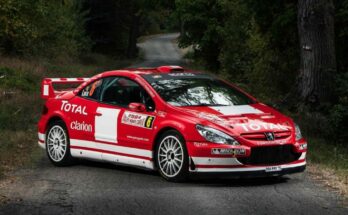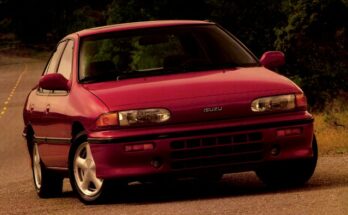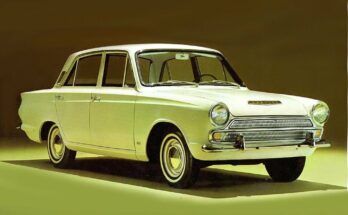People who grew up in the 1980s will recall how impactful the “Back to the Future” movies were. Not just because of the captivating plot and visual effects, but also because of the unusual car featured in the movie.
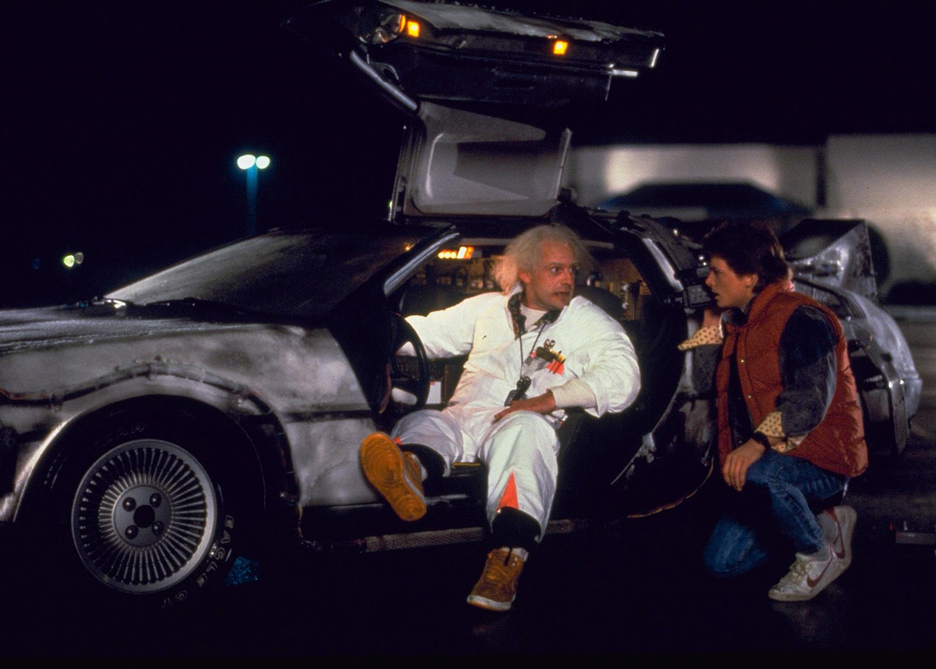
The DeLorean DMC-12 is known for being that time-traveling vehicle in the Back to the Future films, but it was infamous long before Marty McFly (the lead character of the movie) sat inside one in 1985. And even though the fiction is better known today, DeLorean’s true story is equally dramatic.
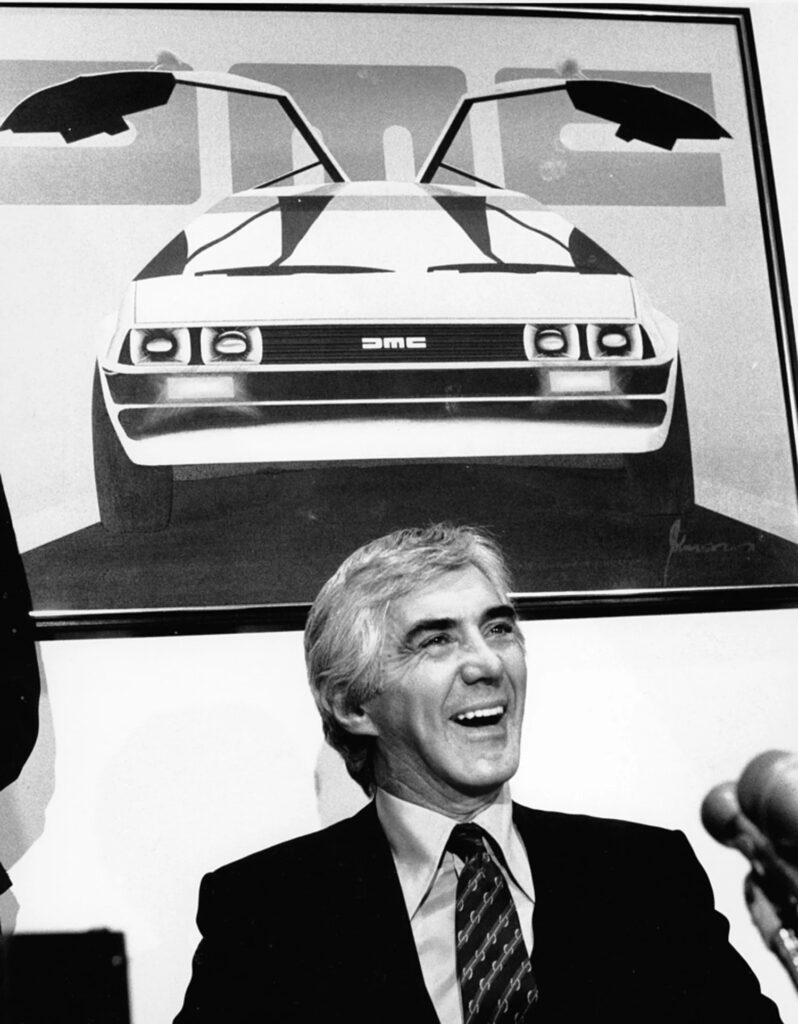
First of all, DeLorean was a real person. His full name was John Z. DeLorean, a dissident General Motors executive who rebelled against the status quo and left the company. DeLorean stated in 1977 that he hoped to start his own sports car manufacturing company. Though he anticipated at the time that the car would be ready the following year, as the first prototype of the car was unveiled in 1976, however the first example of the DeLorean DMC-12 was produced on January 21, 1981.
DeLorean DMC-12
The DMC-12 is commonly referred to simply as “the DeLorean”, as it was the only model ever produced by the company. The car features gull-wing doors and an innovative fiberglass body structure with a steel backbone chassis, along with external brushed stainless-steel body panels.
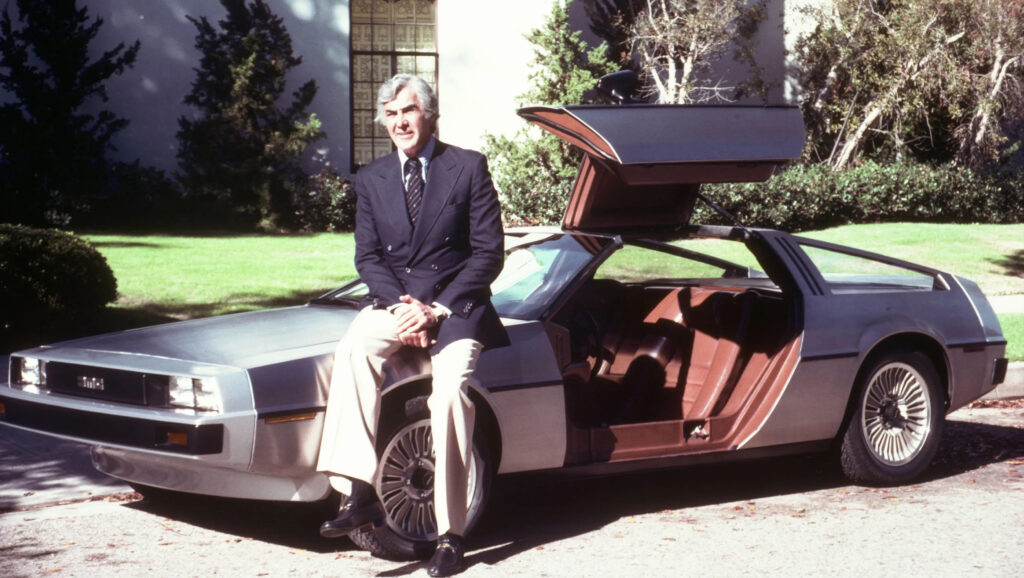
The design of the DMC-12 was a product of Giorgetto Giugiaro of Ital Design and is paneled in brushed SS304 stainless steel. Except for three cars plated in 24-karat gold, it is said that all DMC-12s left the factory uncovered by paint or clearcoat.
Related: Remembering The Classic ‘Lotus Esprit Turbo Challenge’ Game
The DMC-12 features heavy doors supported by cryogenically preset torsion bars and gas-charged struts. These torsion bars were developed by Grumman Aerospace to withstand the stresses of supporting the doors. A popular misconception of the DMC-12’s gull-wing doors is that they require far more side clearance to open relative to ordinary side-hinge doors, such as when parked in a parking lot. In fact, the opposite is true: the DMC-12 requires far less clearance than side-hinge doors. These doors, when opening, only require 11 inches (28 cm) clearance outside the line of the car, making opening and closing the doors in crowded spaces relatively easy.

Much like the doors fitted to the Lamborghini Countach, the DMC-12 doors featured small cutout windows, because full-sized windows would not be fully retractable within the short door panels. Additionally, the doors featured red and amber “safety” lights around the perimeter. These lights illuminated when the door was open and could be seen from the front, rear, or side of the vehicle at night or in low-light situations.
Engine & Drivetrain
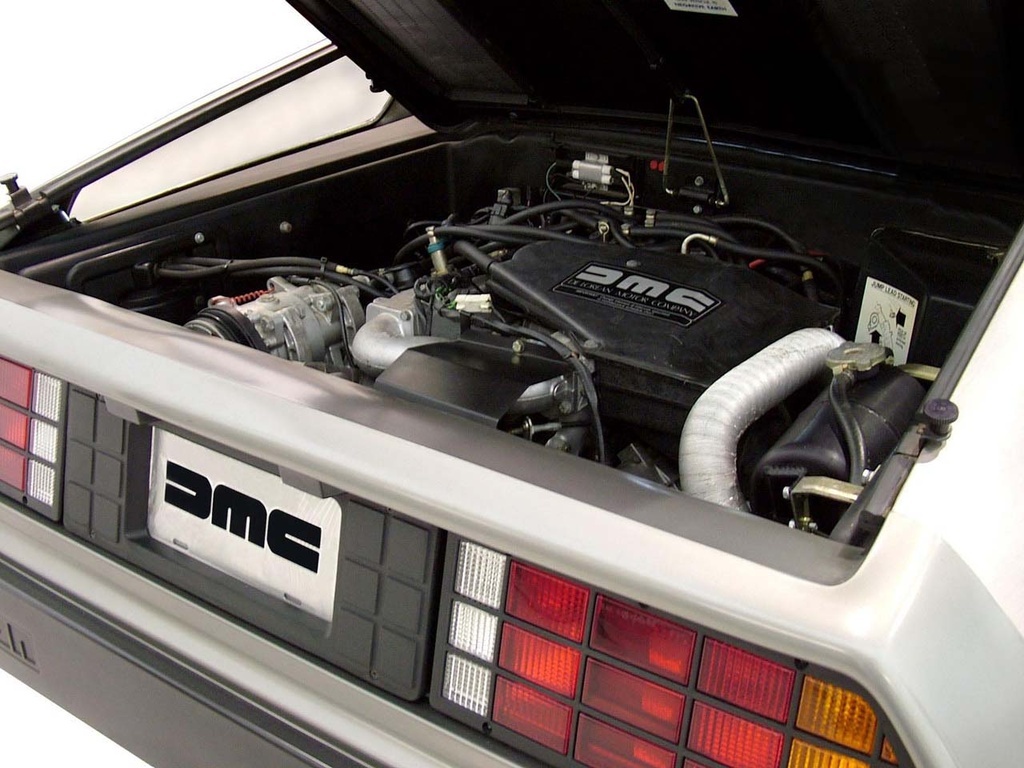
The engine is a 2.85 L (2,849 cc) V6 sourced from Peugeot-Renault-Volvo (PRV) that was developed and produced as part of a unique agreement with the DeLorean Motor Company. It is rated to churn out 130 hp of power and 207 Nm of torque. These engines were produced in the PRV Factory in Douvrin, Northern France, and were an evolution of the 2.7-liter V6 in the Renault 30.
Suspension
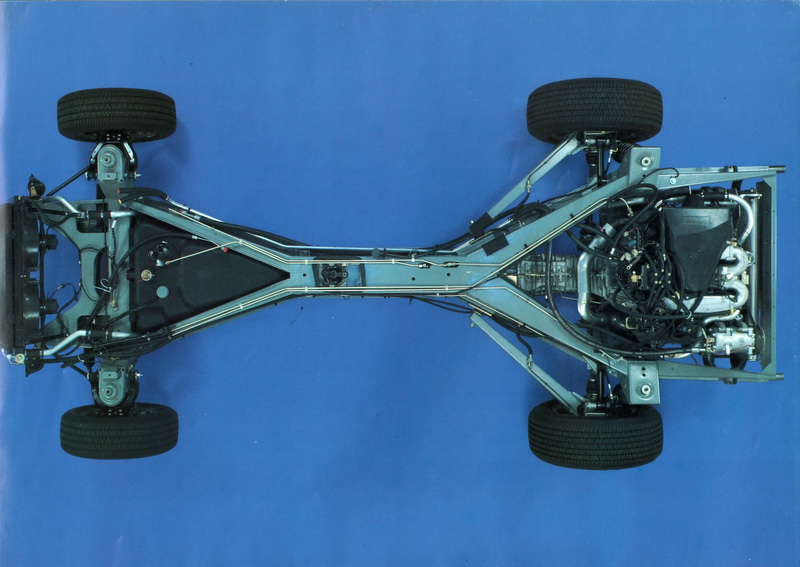
The DMC-12’s suspension system consists of coil springs, telescopic shock absorbers, and an independent four-wheel suspension. Double wishbones are used in the front suspension, while multi-links are used in the back. The automobile is claimed to have handled pretty well during its initial development stages. The design complied with NHTSA’s required bumper and headlight heights at the time, as is seen from the design drawings. The front springs have now been changed or modified by many owners in order to restore the front height to the original design standard.
Performance
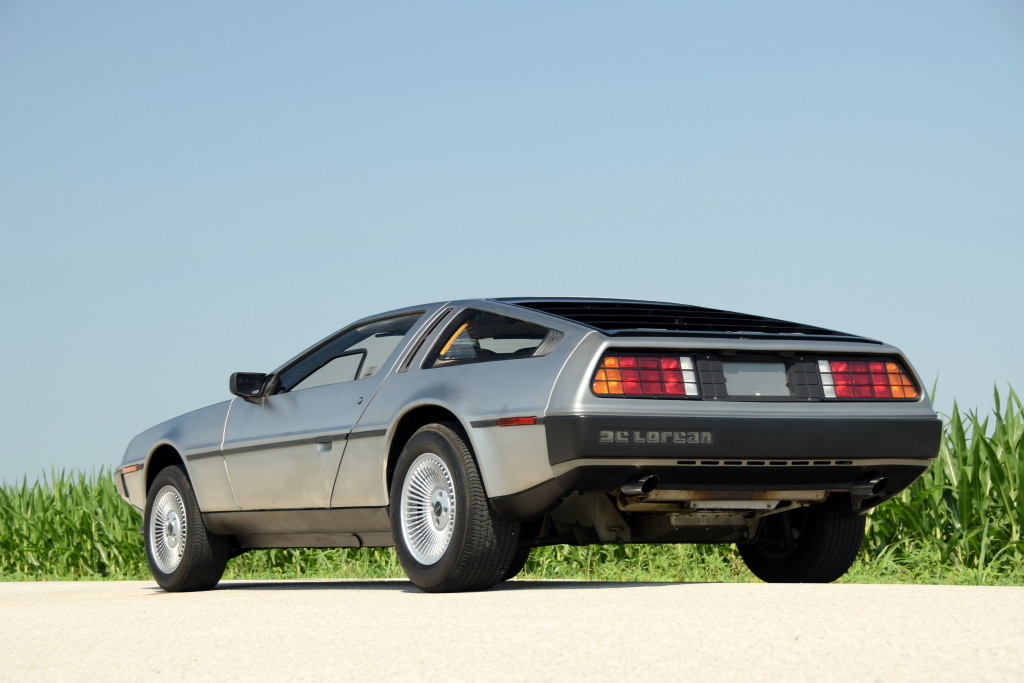
In terms of performance, the DeLorean DMC-12 could achieve 0–100 km/h in around 8.8 seconds, when equipped with a manual transmission. When equipped with an automatic transmission, the DeLorean would sprint to the same speed in 10.5 seconds as tested by Road & Track magazine. The car’s top speed was rated at 110 miles per hour (177 km/h).
Pricing & Options
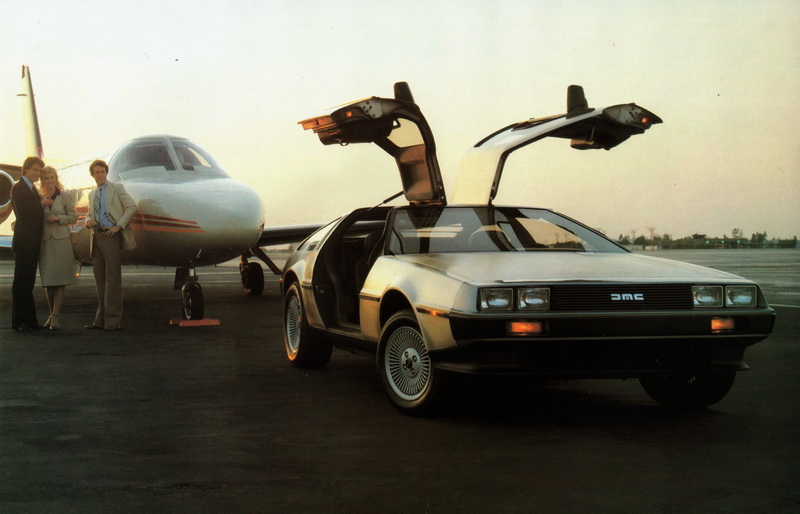
Due to its intended purchase price of US$12,000, the vehicle was given the designation DMC-12. When it was first released in 1981, a DMC-12 had a suggested retail price of US$25,000 ($650 more if fitted with an automatic gearbox). The retail price would rise to $29,825 in 1982 and then to $34,000 in 1983. After the DeLorean Motor Company failed, unsold automobiles could be purchased for less than the suggested retail price. Initially, there were lengthy waiting lists of consumers ready to pay up to $10,000 more than the list price.
DeLorean DMC-12 Was Never a Commercial Success
Despite having a distinctive look, the DMC-12 was never a commercial success. Numerous interrelated problems resulted in compromises in its engineering, which had an impact on both the performance and budgetary sides of it.
Related: Remembering the ST185 Toyota Celica GT-Four
Originally, the concept was intended to have a centrally-mounted Wankel rotary engine. The engine selection was reconsidered when Comotor production ended, and the favored engine became PRV (Peugeot-Renault-Volvo) fuel-injected V6. Additionally, the prototype’s mid-engined placement was changed to a rear-engined setup for the production car. The chassis was initially planned to be produced from a new and untested manufacturing technology known as elastic reservoir molding (ERM), which would lighten the car while presumably lowering its production costs. This new technology, for which DeLorean had purchased patent rights, was eventually found to be unsuitable. These and other changes to the original concept led to considerable schedule pressures. The entire car was deemed to require almost complete re-engineering.
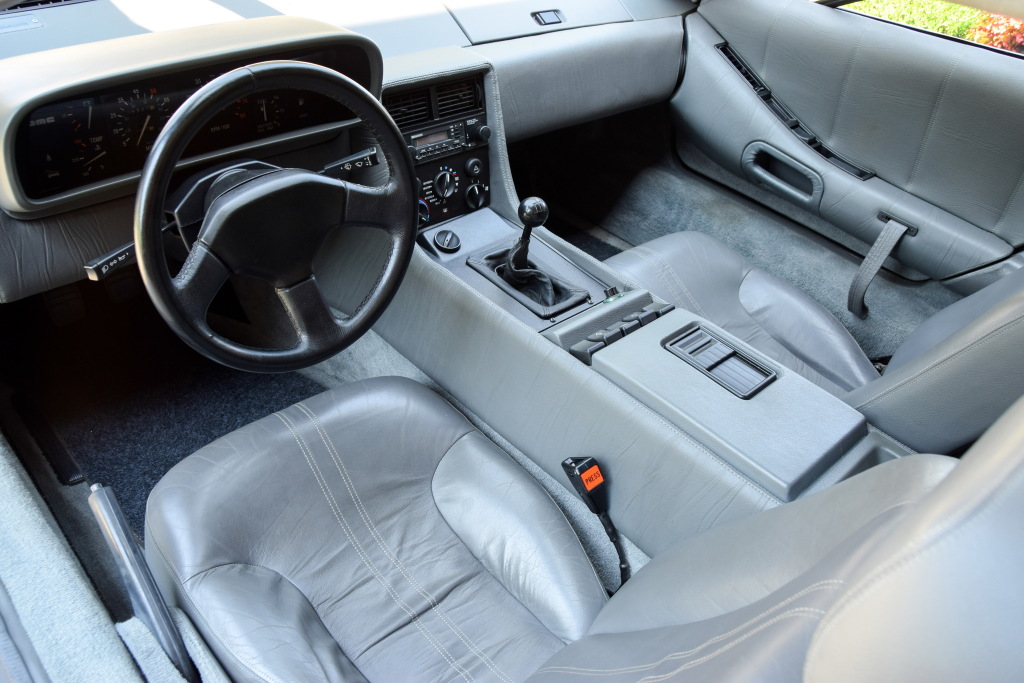
Then came the cash issues. DeLorean required US$175 million to develop and build the motor company. They also tried convincing Hollywood celebrities such as Johnny Carson and Sammy Davis, Jr. to invest in the firm. DeLorean eventually built the DMC-12 in a factory in Dunmurry, Northern Ireland, a neighborhood a few miles from Belfast city center. The company had originally intended to build the factory in Puerto Rico but changed its plans when the Northern Ireland Development Agency offered £100 million towards it, despite an assessment by consultants hired by the NIDA that the business had only a 1-in-10 chance of success.
Related: Remembering the Opel Calibra: 1989-1997
Although DMC-12 manufacturing was supposed to commence in 1979 when the factory’s construction got underway, budget overruns and engineering issues forced the delay until the start of 1981. By the time production actually began in 1981, the unemployment rate was high in Northern Ireland, and local residents lined up to apply for jobs at the factory.
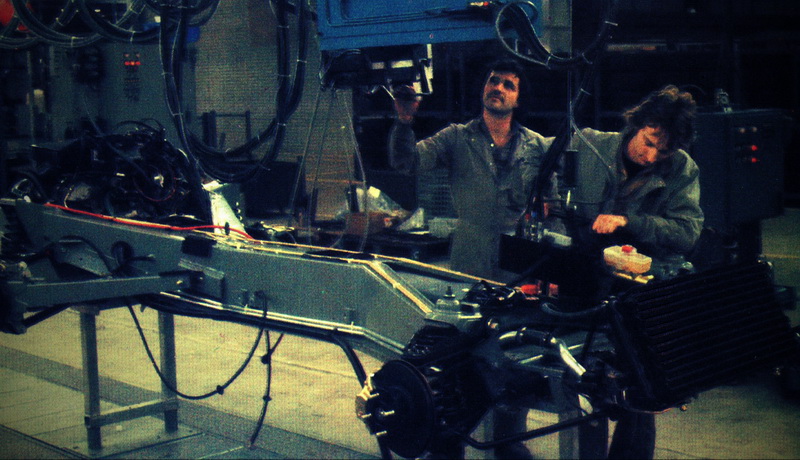
The workers were largely inexperienced but were paid premium wages and supplied with the best equipment available. Most quality issues were solved by 1982, and the cars were sold from dealers with a 1-year/ 12,000-mile (19,000 km) warranty and an available 5-year/ 50,000-mile (80,000 km) service contract.
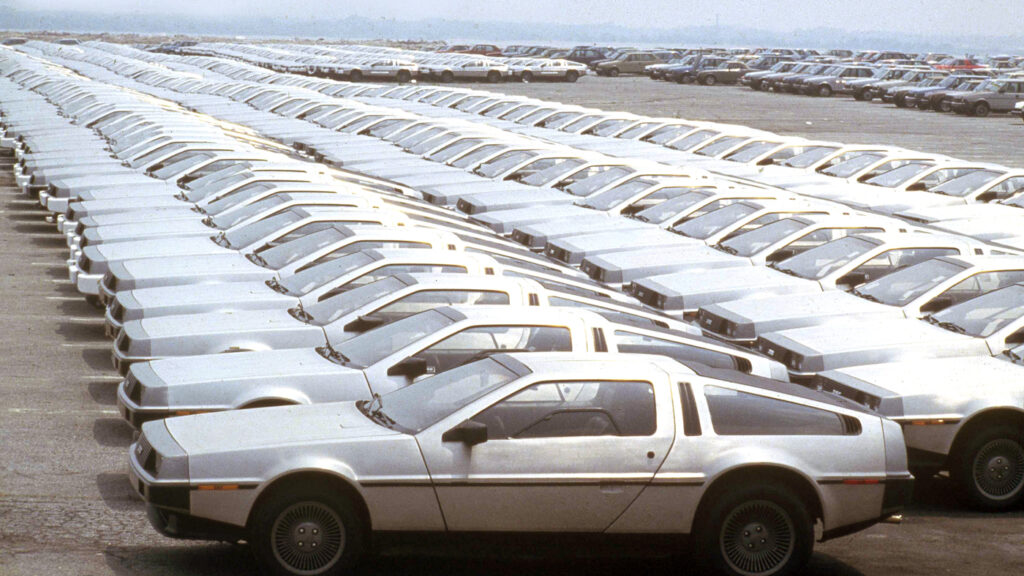
Around 9,200 DMC-12s were produced between January 1981 and December 1982 after which the production was ceased. Out of these, only 16 right-hand-drive factory-authorized DeLoreans were ever produced. The DeLorean Motor Company went bankrupt in late 1982 following John DeLorean’s arrest in October of that year on drug-trafficking charges. He was later found not guilty, but it was too late for the DMC-12 to remain in production.
The Special “Back to the Future” DMC-12
Featured as the time machine in the Back to the Future film trilogy, 6 DeLorean chassis were used during the production, along with one manufactured out of fiberglass for scenes where a full-size DeLorean was needed to “fly” on-screen. Only 3 of the cars still exist, with one that was destroyed at the end of Back to the Future Part III, two additional were abandoned, and the fiberglass replica was scrapped.

Two of the surviving vehicles are owned by Universal Studios, which occasionally displays them or uses them in other films. The final vehicle, which has undergone substantial restoration, is now part of a private collection. The Petersen Automotive Museum is where visitors can see the authentic Back to the Future DeLorean DMC-12.
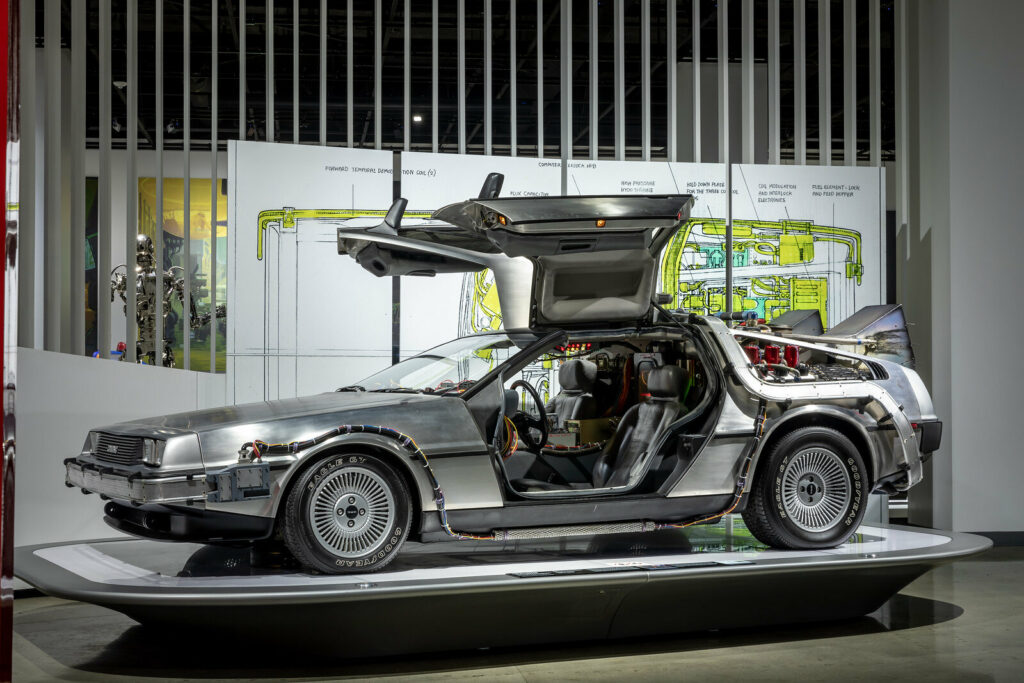
Even though they are extremely rare, it is still possible to purchase a DeLorean DMC-12 today, primarily in the U.S. A top-notch used DMC-12 from the early 1980s can cost close to $50,000 as a collector’s item. A few years ago (in 2016) a father was seen surprising his daughter with her dream car, a DeLorean DMC-12, in a video that went viral over the internet, demonstrating the level of popularity that DeLorean (now 42 years old car) continues to enjoy among today’s youth.
Sponsored: ExamLabs is an online platform designed to facilitate the creation, administration, and evaluation of various types of assessments and exams. It serves as a valuable tool for educators, instructors, and organizations involved in testing and assessment processes.

A computer animation professional with over 23 years of industry experience having served in leading organizations, TV channels & production facilities in Pakistan. An avid car enthusiast and petrolhead with an affection to deliver quality content to help shape opinions. Formerly written for PakWheels as well as major publications including Dawn. Founder of CarSpiritPK.com

